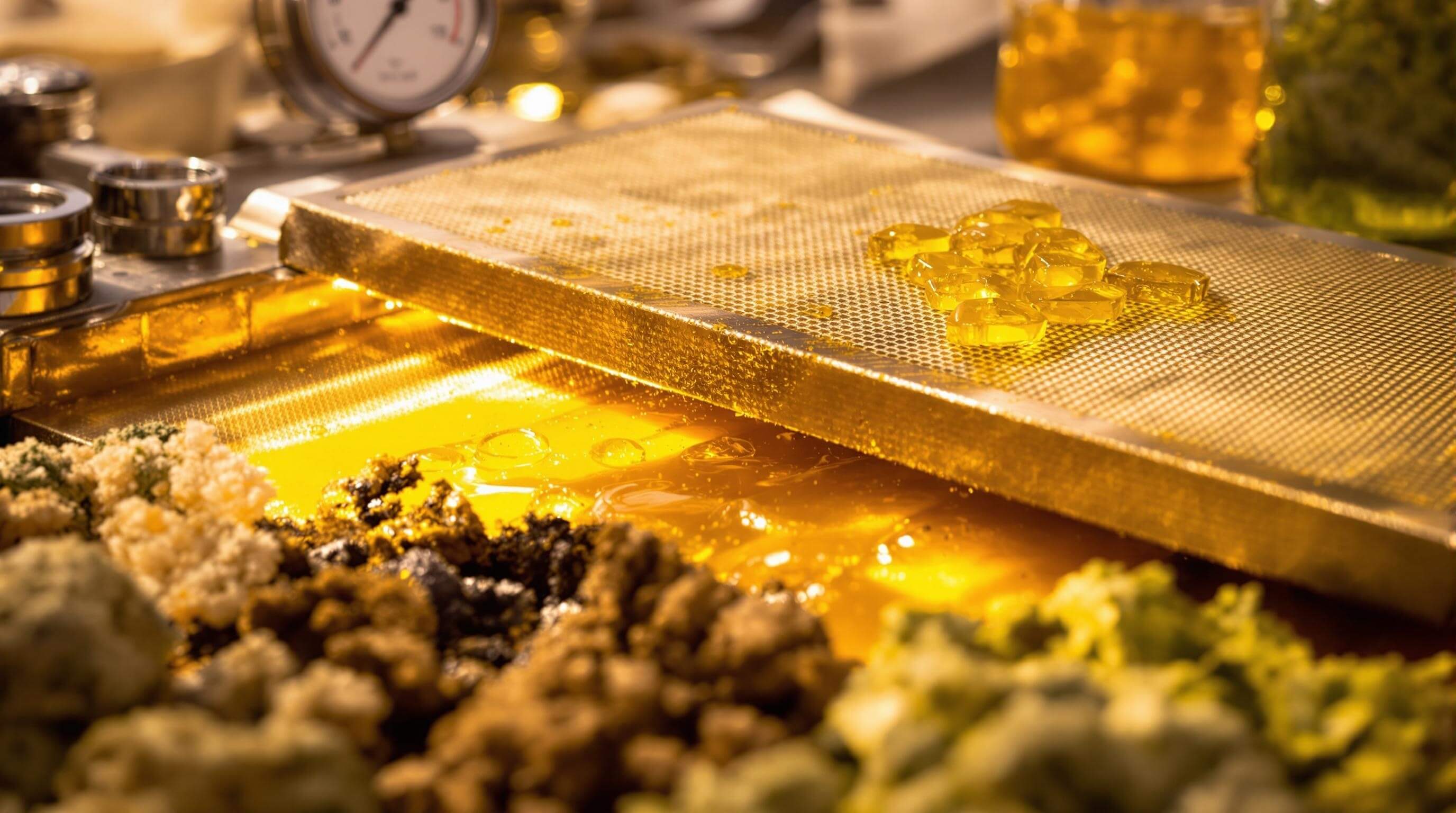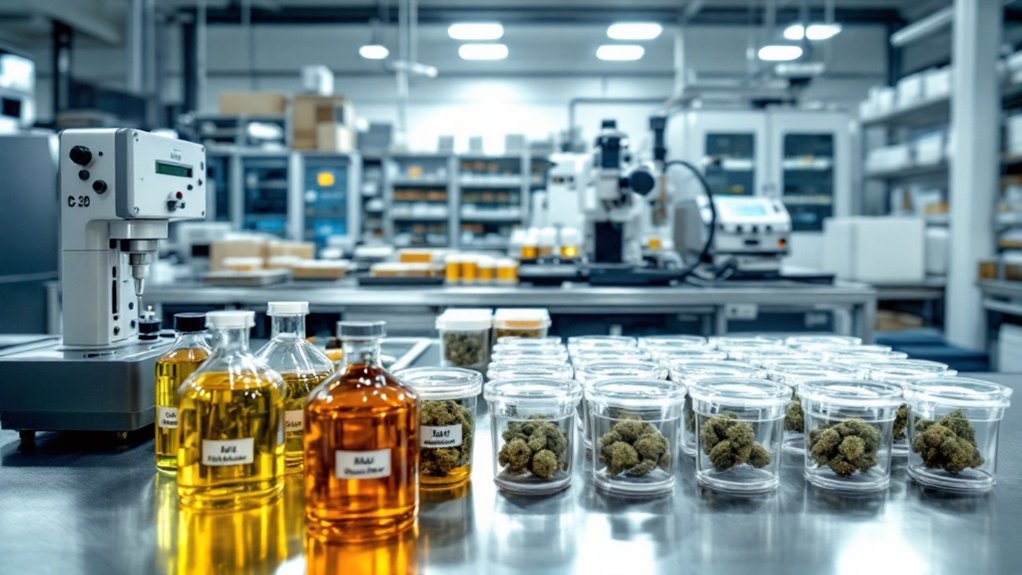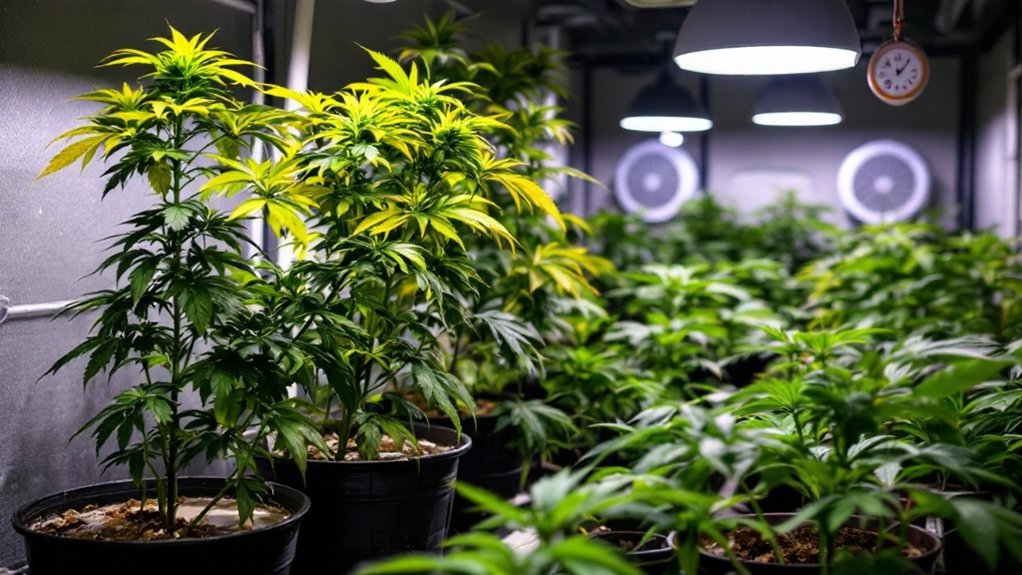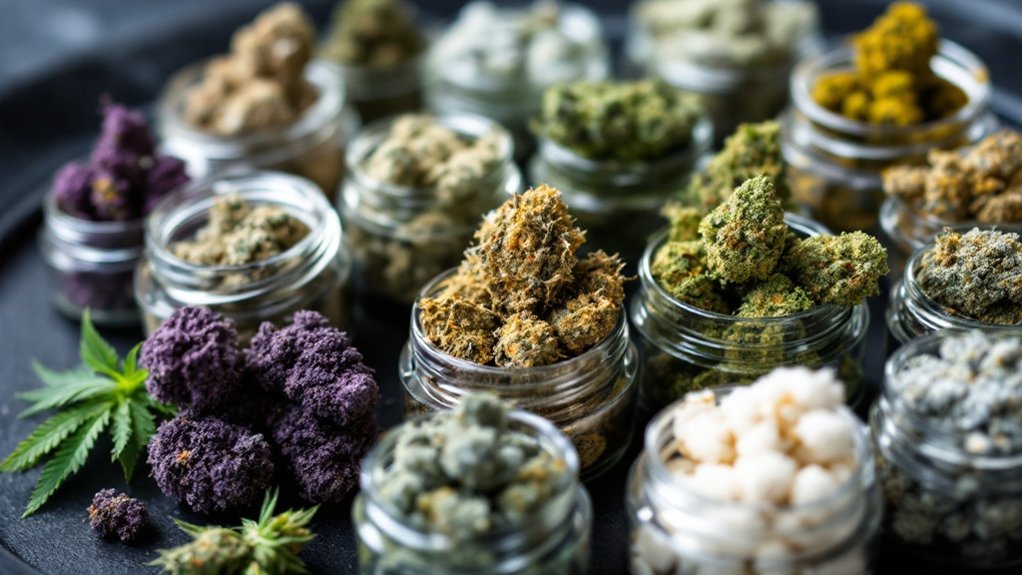Rosin quality depends primarily on five key factors: starting material freshness, genetic selection, extraction parameters, processing techniques, and post-processing storage. Fresh cannabis produces lighter-colored extracts with preserved terpenes, while genetics determine trichome density and cannabinoid profiles. Temperature (lower preserves terpenes) and pressure must be precisely controlled during extraction. Improper processing techniques like over-agitation introduce contaminants, and exposure to light, heat, and air accelerates degradation. Understanding these factors opens the door to consistently producing premium solventless extracts.
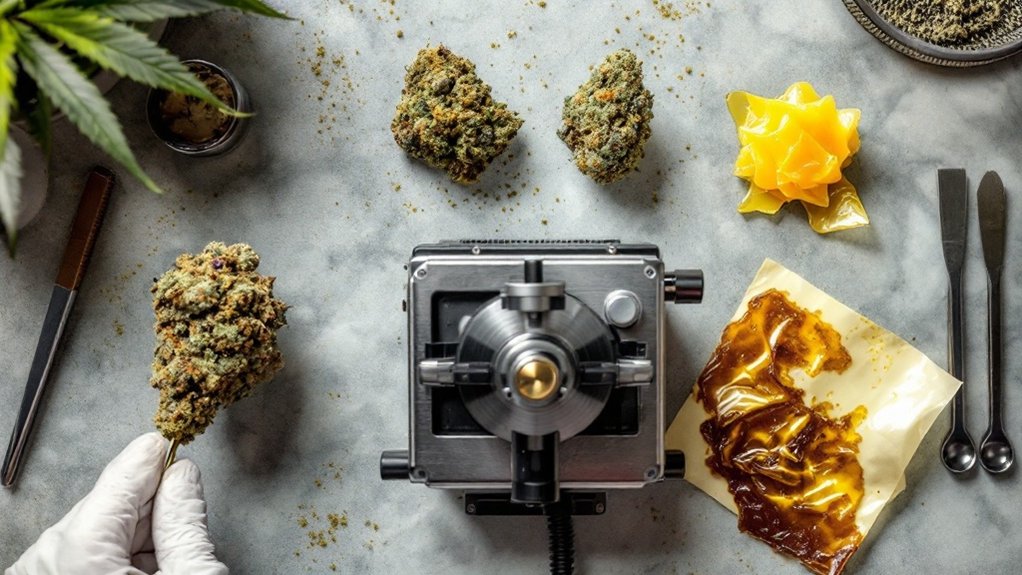
While the growing popularity of solventless extracts has led to increased production of rosin, the quality of this cannabis concentrate depends on multiple interconnected variables that processors must carefully manage. The starting material serves as the foundation for quality, with fresh cannabis producing lighter-colored rosin compared to aged material due to reduced trichome oxidation. Additionally, the trichome structure can significantly affect the extraction efficiency and overall yield of the final product.
Genetics play an essential role as well, as the trichome density, structure, and terpene profile of the cultivar directly influence the final extract’s characteristics, regardless of processing techniques.
The age and freshness of cannabis greatly impact rosin quality. As trichome heads oxidize over time, both THC content and terpene profiles change, affecting the product’s color, potency, and flavor. Fresh frozen flower and freeze-dried bubble hash typically yield lighter, more terpene-rich extracts, while material aged beyond two months tends to produce a pull-and-snap consistency rather than the coveted budder texture. The extraction time must be carefully monitored to prevent degradation of cannabinoids and terpenes while still maximizing yield. Buds harvested past their peak maturity inevitably result in darker rosin with altered effects.
Time is the enemy of rosin quality—fresh material preserves trichomes, terpenes, and the desirable budder consistency consumers seek.
Temperature control represents another vital factor during extraction. Lower temperatures generally produce lighter-colored, terpene-preserved rosin that tends toward a budder consistency, whereas higher temperatures favor a shatter-like texture. Consumers frequently judge product quality by its visual appearance, preferring lighter-colored extracts that signal minimal plant contamination. Uneven heat distribution across pressing plates can create inconsistent results, and prolonged heat exposure invariably degrades both color and cannabinoid integrity.
Pressure application requires precise balance to maximize yield without compromising quality. Excessive force pushes unwanted plant material into the extract, diminishing clarity and introducing contaminants. The ideal pressure varies between flower and hash extractions, with technique directly influencing the final product’s consistency and purity.
Processing techniques further determine quality outcomes. Over-vigorous agitation during ice water extraction, aggressive trimming practices, improper freezing methods, and temperature fluctuations above 40°F during extraction all introduce contaminants.
Similarly, extraction duration affects cannabinoid and terpene ratios, with extended pressing periods potentially degrading aromatic compounds and darkening color.
Post-processing and storage conditions play final but essential roles in rosin quality preservation. Exposure to light, heat, and air accelerates degradation, while different curing methods—whether cold or warm—can modify consistency after extraction.
The terpene-to-cannabinoid ratio influences stability during storage, making proper environmental controls essential for maintaining color, potency, and terpene profiles in the finished product.
Frequently Asked Questions
Can Old or Improperly Stored Cannabis Material Produce Quality Rosin?
Old or improperly stored cannabis material greatly compromises rosin quality.
Aged cannabis suffers from degraded trichomes and diminished cannabinoid and terpene profiles, resulting in darker coloration, harsh flavor, and reduced potency in the final extract.
Environmental factors like heat, light, and oxygen accelerate compound breakdown, while improper humidity levels increase mold risks.
Despite advanced extraction techniques, the fundamental principle remains: high-quality rosin requires fresh, properly preserved starting material stored in cool, dark, airtight conditions.
What’s the Ideal Micron Size for Rosin Filter Bags?
The ideal micron size for rosin filter bags depends on the starting material.
For flower, 75-220 microns is appropriate, with larger sizes (120-220) maximizing yield and smaller sizes (75-90) enhancing purity.
Bubble hash requires 15-37 microns for peak filtration, while dry sift or kief benefits from 25-75 microns.
The selection represents a fundamental trade-off: smaller micron sizes produce cleaner, purer rosin, while larger micron sizes typically increase yield at the expense of some quality.
How Long Does Fresh-Pressed Rosin Remain Stable at Peak Quality?
Fresh-pressed rosin begins deteriorating within one hour at room temperature, showing noticeable consistency changes.
While semi-stable for approximately one week before significant aroma and flavor degradation, long-term quality preservation requires proper storage methods.
Refrigeration extends freshness for frequent users, while freezer storage in airtight glass containers can maintain terpene and cannabinoid profiles for several months.
Exposure to air, heat above 70°F, light, and temperature fluctuations all accelerate the degradation process substantially.
Does Freeze-Drying Cannabis Before Pressing Affect Terpene Preservation?
Freeze-drying cannabis before pressing greatly enhances terpene preservation compared to traditional drying methods.
This process works by immediately freezing the harvested material, then removing moisture through sublimation under vacuum pressure, which bypasses the heat exposure that typically causes volatile terpene loss.
Research indicates that properly freeze-dried cannabis retains more of its original terpene profile, resulting in rosin with superior aromatic properties and flavor complexity.
However, ideal moisture levels must be maintained to prevent damage to trichome structures.
Can You Repress Already Extracted Material for Additional Yield?
Repressing already extracted cannabis material can yield additional rosin, though with diminishing returns.
During a second press, processors apply heat and pressure to previously pressed material to extract remaining cannabinoids and terpenes. The secondary yield is typically darker in color, contains fewer terpenes, and offers lower overall quality compared to the first extraction.
Commercial rosin press machines provide precise temperature and pressure controls necessary for successful repressing, while proper collection techniques help separate plant particles from the resulting concentrate.
